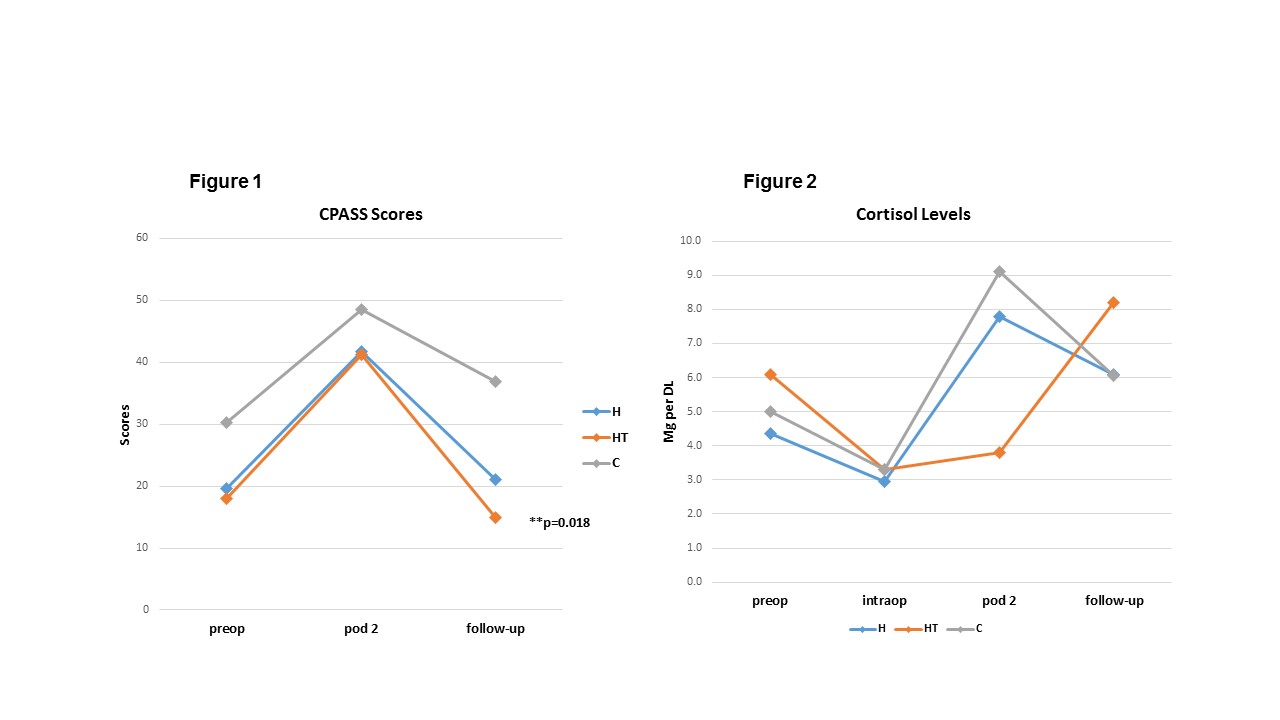NM-263
The use of complementary therapy in managing pain in children undoing spinal fusion surgery
Sacks K, Olivant-Fisher A, Shah S, Brenn B, Choudhry D
Nemours/A I duPont Hospital for Children, Wilmington, Delaware, US
Introduction: Complementary and alternative medicine (CAM) is being use with increasing frequency among children for alleviation of perioperative anxiety and postoperative pain. Rates vary depending on how CAM is defined and how sampling is done, with some rates reaching >75% (1). In children undergoing surgery and experiencing acute post-operative pain, little information is available regarding use of CAM therapy versus standard of care. In this prospective, randomized and controlled pilot study, our aim was to evaluate if two CAM modalities, Hypnosis (H) and Healing Touch (HT) provide any benefit, assessed by decrease in postoperative pain and perioperative anxiety in adolescents with idiopathic scoliosis (AIS) undergoing posterior spinal fusion (PSF) surgery.
Methods: Following IRB approval and parental or patient consent, 30 patients undergoing PSF for AIS were recruited and randomly assigned into one of three groups of 10 patients each:
Group H: Hypnosis intervention + Standard pain management
Group HT: Healing Touch intervention + Standard pain management
Group C: Standard pain management
All patients received standard pain management as per our protocol consisting of perioperative gabapentin, and postoperative morphine PCA, clonidine transdermal patch, ketorolac and diazepam. In addition, groups H received a Hypnosis intervention and group HT received a Healing Touch intervention on the day of surgery and daily until discharge. All patients were evaluated for opioid use, pain scores (VAS), perioperative cortisol levels (on three occasions) and anxiety scores (Child Pain Anxiety Symptoms Scale - CPASS).
Numeric data were analyzed using ANOVA with intergroup post hoc analysis done by Tukeys test. Nominal data was analyzed using chi square. The significance was assumed at P<0.05.
Results: All three groups were demographically similar. There was no difference among groups in pain scores (VAS) or opioid use. Anxiety scores (CPASS) were higher in group C but did not reach significance. Significant difference was observed in anxiety scores between group C and group HT at the final visit only (Figure 1). No difference in cortisol levels were observed between groups in the preoperative and intraoperative periods. However, group HT demonstrated lower cortisol level on postoperative day two, which returned to the same level as the other two groups at the time of follow up visit (Figure 2).
Conclusions
Due to a small sample size, we are unable to conclude if HT and H provide any benefit in the perioperative period over standard pain regimen. However, we observed a trend towards reduction in postoperative cortisol level in the HT group on postop day-2 and reduced anxiety on follow up visit. Further study using a larger sample size may be necessary in the future.
References
1. Adams D, et al.Complementary and alternative medicine use by pediatric specialty outpatients. Pediatrics. 2013 Feb;131(2):225-32.
Top












